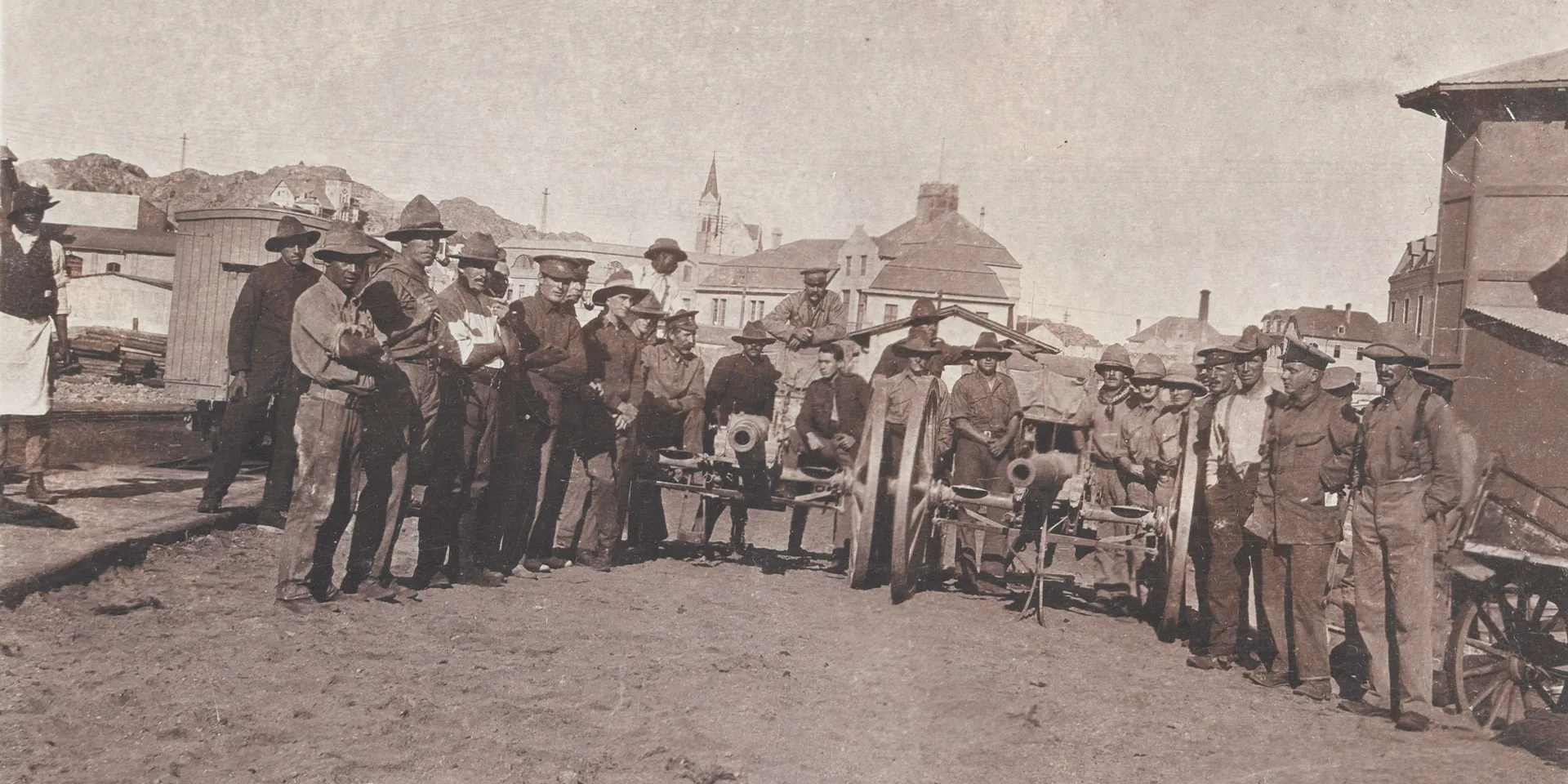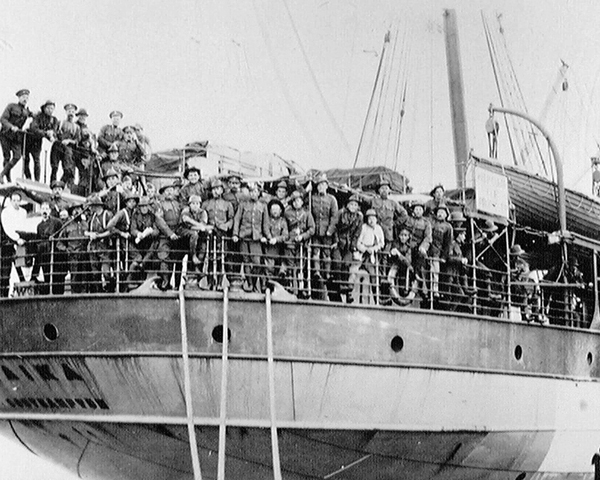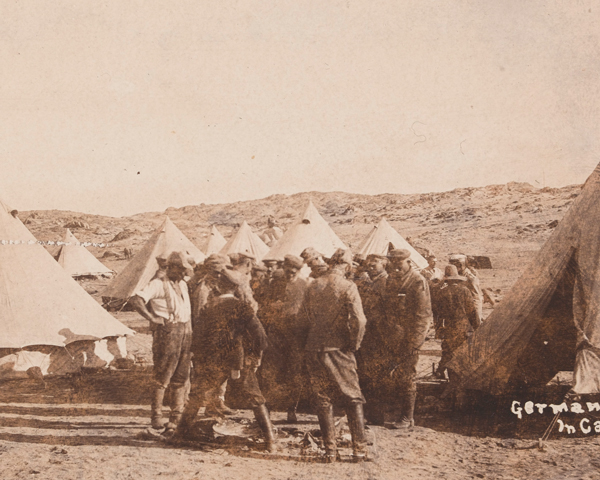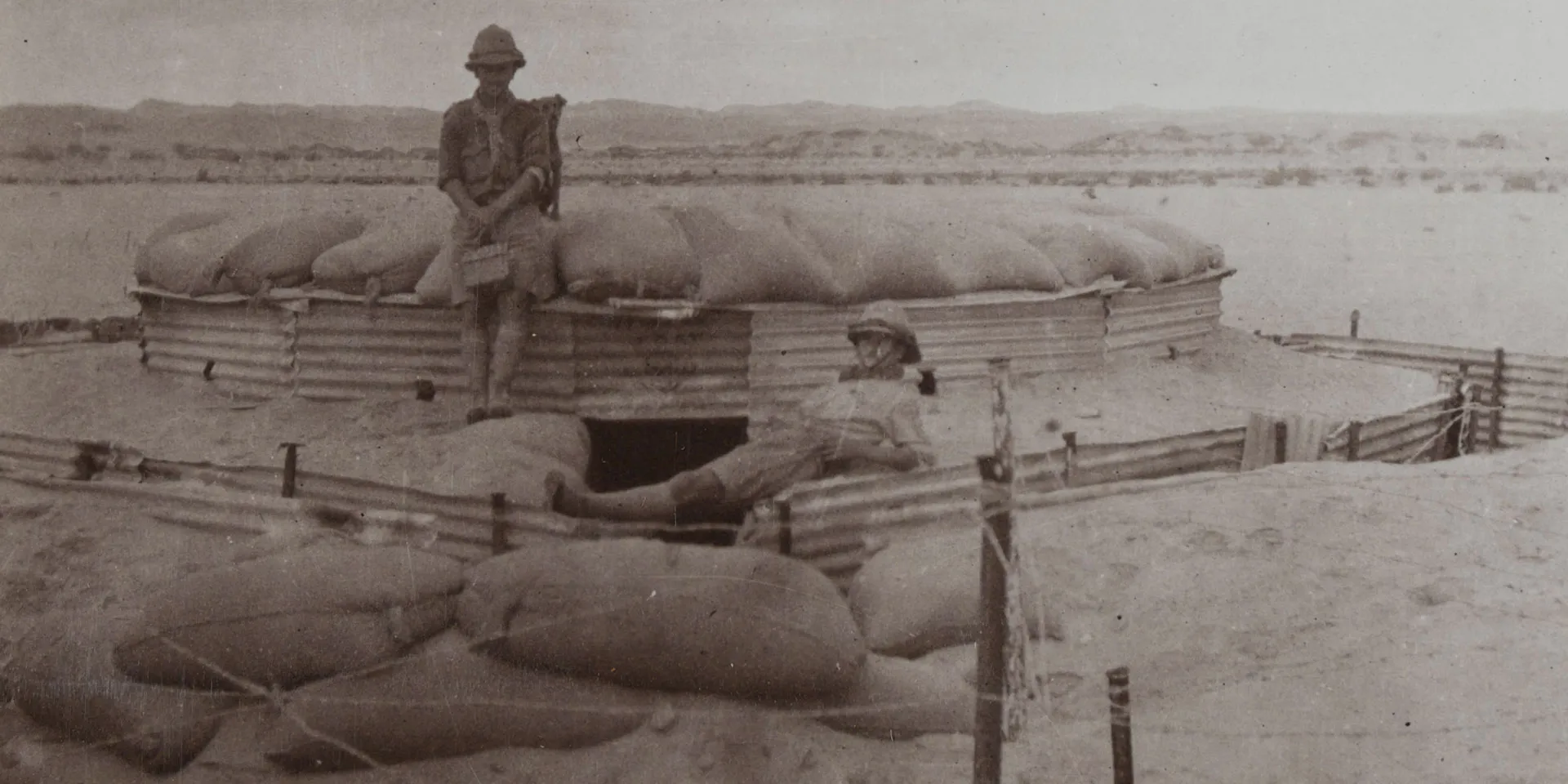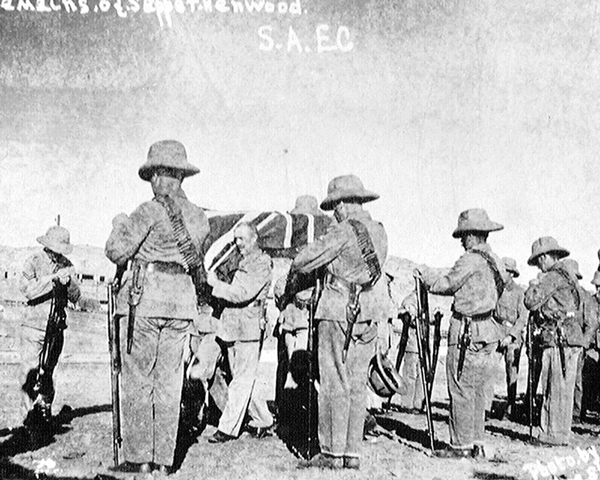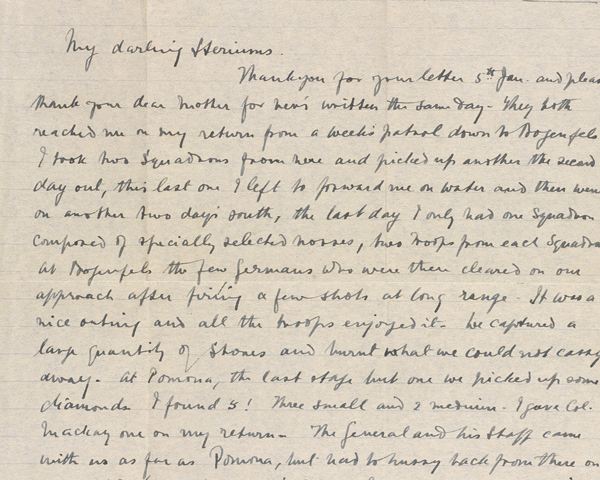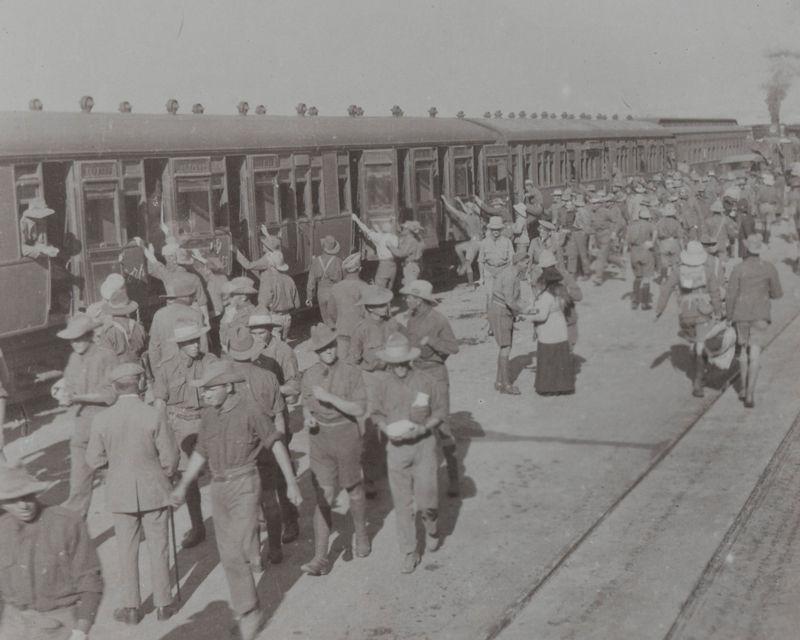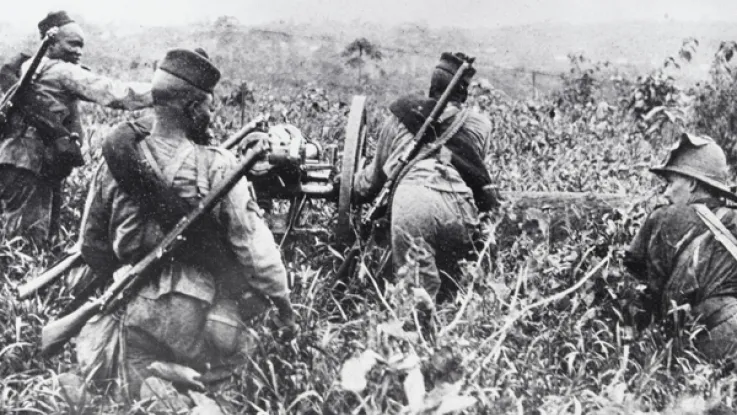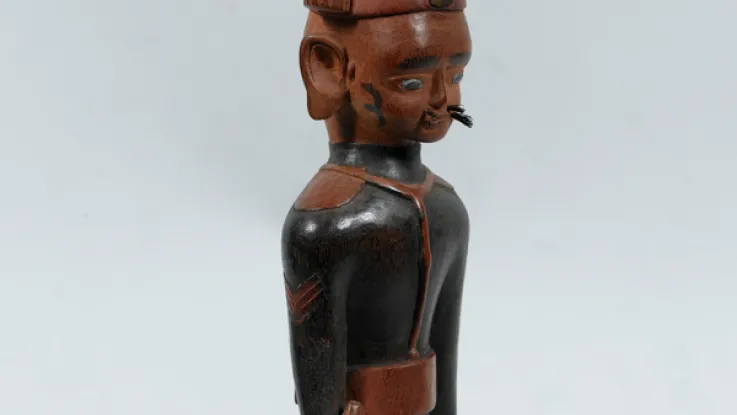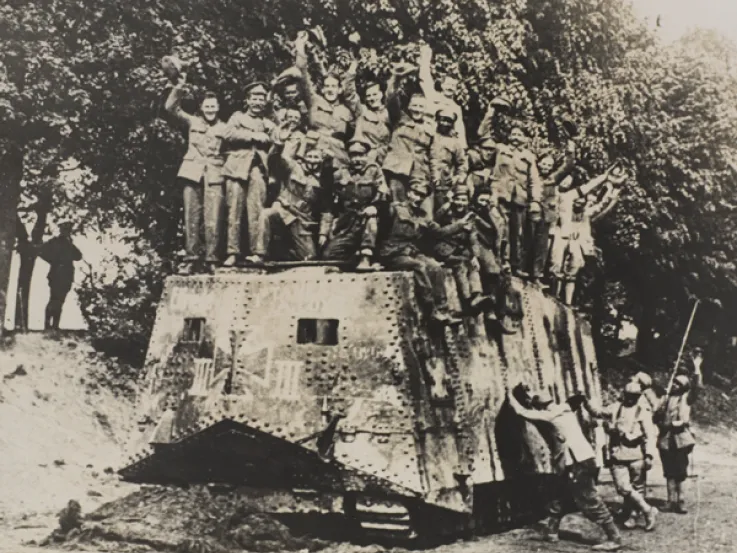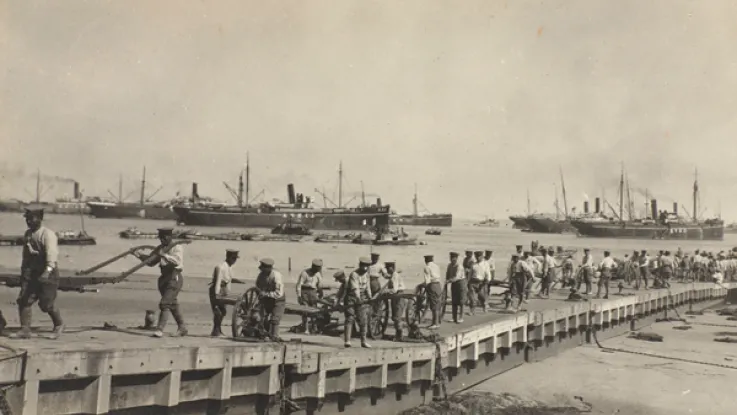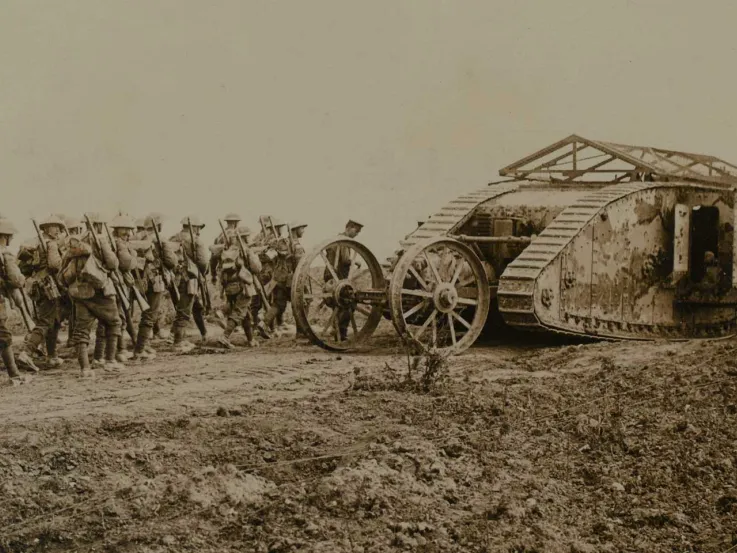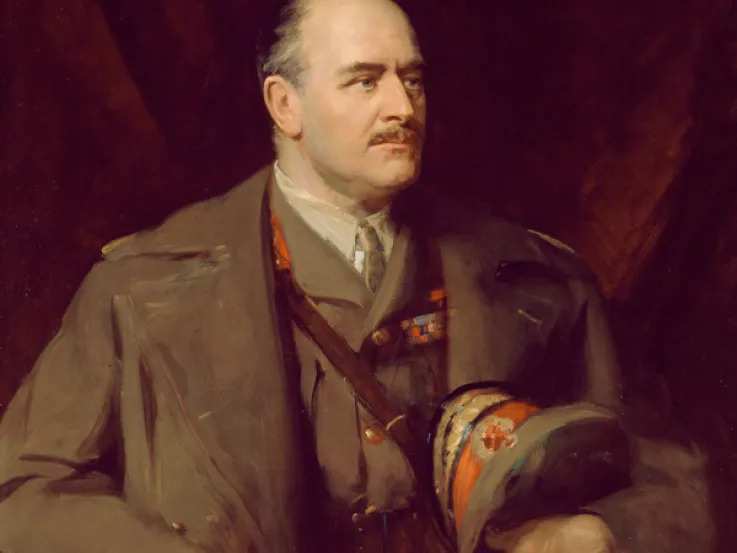South African troops
Undertaken by South African colonial troops, the campaign was aimed at preventing the German navy from using the colony’s ports. There were also several powerful radio transmitters in South-West Africa that could be used to direct naval raids against British shipping.
South African soldiers were mobilised along the southern border of South-West Africa in August 1914 and the port of Lüderitz was quickly occupied by 1,800 troops on 18 September.
Frontier skirmishes
Further operations were delayed by a revolt in South Africa among disaffected Boers, unreconciled to their defeat by the British in 1902. However, frontier skirmishes continued, including a German victory at Sandfontein on 26 September 1914, and a German invasion of the South African enclave of Walvis Bay on Christmas Day.
‘My merry men have to patrol out a good distance to our front and we have posts on the flanks a good way out. It is very hot in these parts and where we patrol is one of the hottest places in this hot country. Our Sabbath morn was disbanded by aeroplanes dropping bombs on this camp… [Later] we got into action against the sausages, plenty of lead flying about but it was only a small affair… The rebellion rather delayed matters and it would be no good our moving forward until the others are ready.’Letter from Major John Montgomery, 1st Mounted Rifles (1st Natal Carbineers) — 1 December 1914
Maritz Revolt
The rebellion alluded to by Montgomery had been initiated by Lieutenant-Colonel Manie Maritz and several other officers. After issuing a proclamation calling on the Boer population to rise up against the British, they gathered a force of about 12,000 rebels in the Transvaal and Orange Free State.
The pro-British government declared martial law. Forces under the command of Generals Louis Botha and Jan Smuts defeated the rebels on 24 October 1914. The revolt was effectively over by early February 1915.
Advance
In late February 1915, a largely volunteer force of 60,000 South Africans, moving in four columns, finally began advancing again into enemy territory. To face them, the Germans had around 6,000 colonial soldiers.
The prime minister of South Africa, Louis Botha, organised an attack from several directions, including a landing of troops at Swakopmund. Using fast-moving mounted units that made wide outflanking thrusts, Botha succeeded in confusing and dividing the small defending force. This was despite encountering strong resistance, as well as being delayed by mines and water shortages caused by poisoned wells.
'I took two Troops… to Hofenfels… the few Germans who were there cleared out on our approach after firing a few shots at long range. It was a nice outing… we captured a large quantity of stores and burnt what we could not carry away… The Germans did not oppose us after all their trenching and mine laying, we lost a few animals and one or two officers were touched by splinters but otherwise all secure… Every railway has been blown up and most of the wells poisoned.’Letter from Major John Montgomery, 1st Mounted Rifles (1st Natal Carbineers) — 14 February 1915
Allied victory
The decisive battle of the campaign was fought at Gibeon on 27 April 1915. The following month, the capital Windhoek was occupied. By this time, most of the country had been conquered.
The Germans were gradually squeezed into the north-west corner of the territory. Defeated at Otavi on 1 July 1915, they finally surrendered at Khorab eight days later. The victory had been won with a minimum of casualties and was one of the first major Allied successes of the war.

